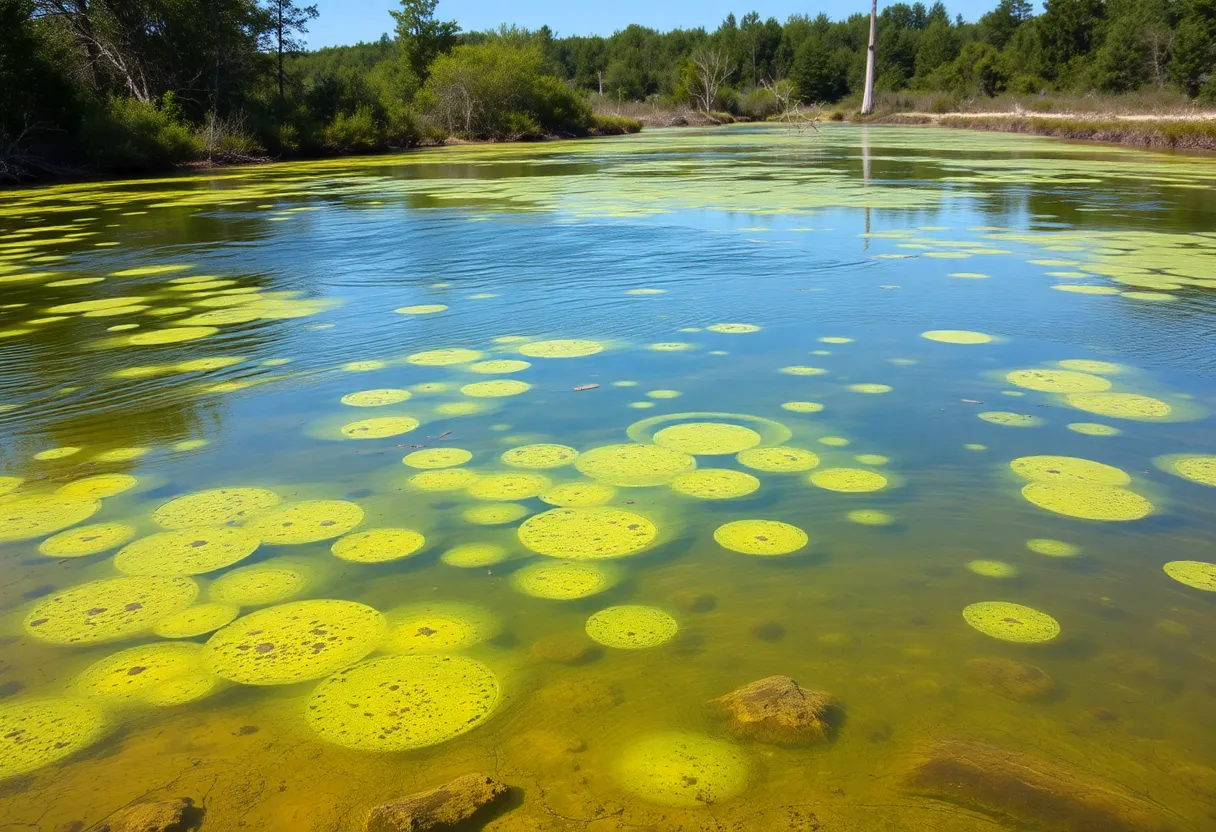News Summary
The Rhode Island Department of Health and Department of Environmental Management have issued a health advisory against contact with JL Curran Reservoir and Blackamore Pond due to confirmed cyanobacteria blooms. These blue-green algae can produce toxins harmful to human and animal health. All recreational activities in affected areas are advised against, and residents should not drink untreated water or consume fish from these waters until further notice. Residents are encouraged to report any suspected blooms to assist in monitoring and management efforts.
Cranston, Rhode Island – The Rhode Island Department of Health (RIDOH) and the Rhode Island Department of Environmental Management (DEM) have issued a health advisory urging the public to avoid contact with JL Curran Reservoir and Blackamore Pond due to confirmed blooms of cyanobacteria, commonly referred to as blue-green algae. These toxic blooms can produce harmful substances that pose risks to both human health and animal safety.
The advisory follows the detection of high concentrations of cyanobacteria and associated toxins by the RIDOH State Health Laboratory. As a result, all recreational activities, including swimming, fishing, boating, and kayaking in these water bodies are considered high risk and should be avoided until further notice. Residents are also cautioned against drinking untreated water from these affected areas or consuming any fish caught in the contaminated waters.
Health Risks: Exposure to cyanobacteria can lead to a variety of health issues. Common symptoms associated with skin contact include irritation of the skin, nose, eyes, and throat. Ingesting water contaminated with algal toxins could result in stomachaches, diarrhea, vomiting, and nausea. In rarer instances, more severe health complications may occur, including dizziness, headaches, fever, liver damage, or nervous system issues.
Pets are equally at risk from cyanobacterial exposure. Pet owners are strongly advised to keep their animals away from affected water bodies to prevent symptoms that can arise from drinking or swimming in contaminated waters.
Visual Identification: Residents are encouraged to be vigilant in monitoring the appearance of local waters. Cyanobacteria blooms often manifest as a bright green coloration in the water or might resemble thick pea soup or green cottage cheese. Algal mats may also be present, serving as visual indicators of contamination.
The current health advisory not only affects JL Curran Reservoir and Blackamore Pond but has also been expanded to include advisories for four additional water bodies: Spectacle Pond, Upper J.L. Curran Reservoir, and Mashapaug Pond in Providence. Furthermore, advisories remain in effect for Georgiaville Pond in Smithfield and Almy Pond in Newport.
The conditions leading to cyanobacteria blooms typically occur during late summer and early fall, particularly when water temperatures rise, and adequate sunlight and nutrient levels are present. The season for these blooms can extend into the fall and occasionally into winter, underscoring the need for continuous monitoring of water quality.
The RIDOH and DEM are urging residents to report any suspected blue-green algae blooms. Individuals can contact the DEM’s Office of Water Resources via phone or email, and it is recommended to include photographs when reporting any signs of algal growth to assist with proper identification and management efforts.
All residents are reminded that the health advisory will remain in effect until further notice, and should take precautions to protect their health and the health of their pets by avoiding contact with the affected water bodies.
Deeper Dive: News & Info About This Topic
HERE Resources
Public Health Warning in Cranston Due to Toxic Algae
Additional Resources
- Turn to 10 News
- Wikipedia: Cyanobacteria
- ABC 6 News
- Google Search: Cyanobacteria health risk
- Cranston Online
- Encyclopedia Britannica: Algae
- Providence Journal
- Google News: Cranston ponds algae bloom
- Patch Warwick

Author: STAFF HERE PROVIDENCE WRITER
PROVIDENCE STAFF WRITER The PROVIDENCE STAFF WRITER represents the experienced team at HEREProvidence.com, your go-to source for actionable local news and information in Providence, Providence County, and beyond. Specializing in "news you can use," we cover essential topics like product reviews for personal and business needs, local business directories, politics, real estate trends, neighborhood insights, and state news affecting the area—with deep expertise drawn from years of dedicated reporting and strong community input, including local press releases and business updates. We deliver top reporting on high-value events such as WaterFire, Rhode Island International Film Festival, and Rhode Island Comic Con. Our coverage extends to key organizations like the Greater Providence Chamber of Commerce and Providence Warwick Convention & Visitors Bureau, plus leading businesses in finance and manufacturing that power the local economy such as Citizens Financial Group and Textron. As part of the broader HERE network, we provide comprehensive, credible insights into Rhode Island's dynamic landscape.





